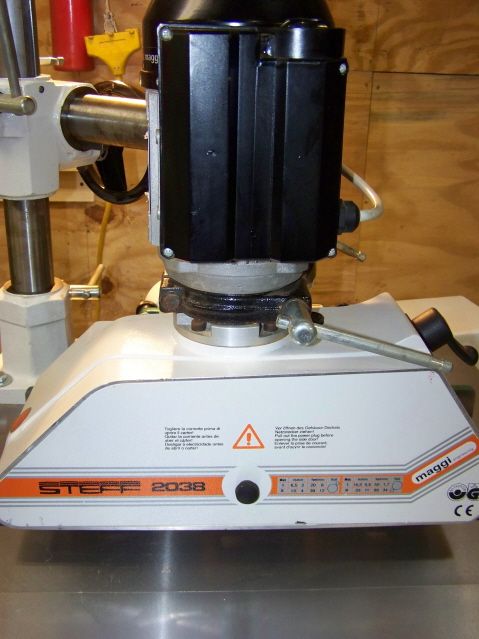Setting Up a Power Feeder
A cabinetmaker gets advice on adjusting a power feeder he bought second-hand with no manual. November 13, 2009
Question
Recently we acquired some new equipment. One thing was a Steff 2038 c I mounted to a Grizzly table saw. We took the power feeder off and mounted it to a new 3 hp Grizzly shaper. We didn't get any manuals with these machines and are clueless about feeders. Is this a good feeder? How do we know how much down pressure to use? And is the feeder set at a slight angle to the fence to keep the material against the fence as it's feeding?

Click here for higher quality, full size image
Forum Responses
(Cabinetmaking Forum)
From contributor A:
Angle the feeder so the outfeed end is 1/4" to 1/2" closer to the fence than the infeed. Wind the feeder down toward the shaper table so your stock lifts the wheels by about 3/8" maximum as the stock goes through. Shove some offcuts through to see if it keeps tight to the fence. Keep your fingers away from the infeed end. There may be all kinds of finesses to the above, but that's about it. If needed, and the feeder is able to swivel, you can do the same sort of thing but have the wheels rolling in the same plane as the fence. Adjust the speed by changing the order of the cogs round inside or by a speed selector switch if it has one. If you haven't used a feeder on a shaper before, you will be pleased with it.
From contributor J:
That is a good feeder, probably worth more than the new Griz shaper. Same advice on setup.
From contributor T:
Keep your table surfaces lubricated. A lot of the problems with feeders come from just too much friction on the table. We use a material called Topcote by Bostik Company. It keeps the table surfaces slick but does not contain any silicones to mess with your subsequent finishing.
From contributor R:
All of the above, but watch your downward pressure from the feeder. You can actually flex the table, causing the knife to cut deeper than you want. After you make your initial setup, run some scrap that is the same thickness as your final stock through it to ensure the cut is set where you want it. Nothing is more annoying than that little cut line that wasn't there when you ran the test piece through by hand. Also, the tighter the feeder is to the table, the harder it has to work to push the stock through. You only need enough pressure to keep it moving and from kicking back. 3/8" may be a little strong. Also check your rollers. If these feeders have had a lot of use in their lives, it may be beneficial to change them. (Just like tires on your car, they wear out. They tend to harden up, so on visual inspection they may look fine, but they don't have the grip, thus requiring more downward pressure to move the stock.) Good luck! There are so many operations that you can now perform with a power feeder that you could never do by hand.
